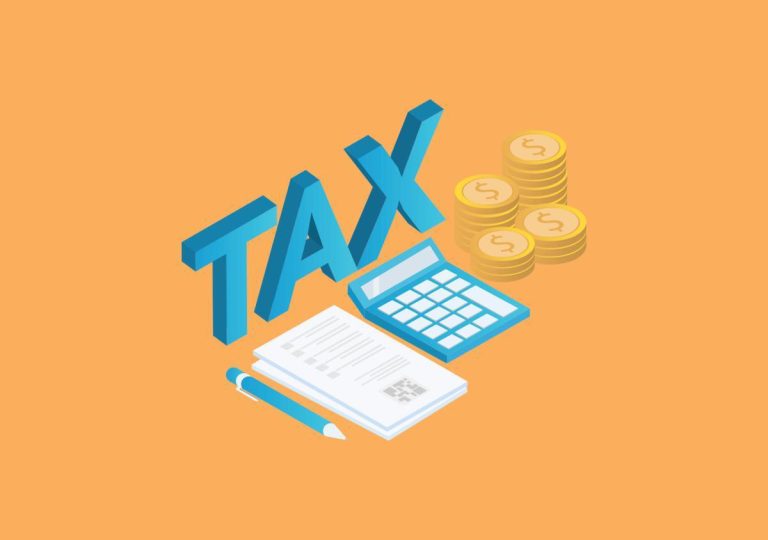Legislative background
Under Hong Kong Financial Reporting Standard (HKFRS) 9 Financial Instruments and its international equivalent International Financial Reporting Standard 9, more financial instruments for both assets and liabilities are required to be accounted for on a fair value basis.
As held by the Court of Final Appeal in November 2013 in the case of Nice Cheer v. the Commissioner of Inland Revenue, profits or losses which would be regarded as being unrealized or anticipated for tax purposes may be recognized under such an accounting approach and should be treated as non-taxable or non-deductible as the case may be.
The decision of Nice Cheer means that taxpayers would have to make tax adjustments to their accounting profits or losses recognized under HKFRS 9 to exclude unrealized profits or losses before they file their tax returns.
Despite this decision, many taxpayers have expressed a desire to file their tax returns on a fair value basis. In so doing, these taxpayers hope to avoid the time and effort of tracking transactions on a realization basis for tax reporting purposes.
In response to requests by such taxpayers, the Inland Revenue Department (IRD) has since the 2013/14 year of assessment accepted tax returns in which taxpayers have chosen to file on a fair value basis. To provide more clarity and certainty, a new law was enacted in February 2019 to codify this interim administrative measure into the Inland Revenue Ordinance (IRO).
Under the new law applicable for years of assessment with a basis period commencing on or after 1 January 2018, taxpayers have to make a generally irrevocable election for the general alignment of the tax treatment of financial instruments with their accounting treatment as reflected in the profit and loss account under HKFRS 9. For taxpayers who are temporarily exempted from applying HKFRS 9, e.g. insurers, the IRD has extended their acceptance of returns in which the assessable profits or losses are computed on a fair value basis.
Furthermore, in respect of trading profits or losses, the new provisions only apply where the financial instruments concerned are revenue in nature and sourced onshore.
In June 2020, the IRD issued revised Departmental Interpretation and Practice Note (DIPN) No. 42 to state how it will interpret and apply the new law in its assessing practice.
Most of the views and positions taken by the IRD on the new law as stated in the revised DIPN were explained in a previous article published in the December 2018 issue of A Plus. This article focuses on the notable clarifications in the DIPN.
Notable clarifications detailed in revised DIPN 42
ECL for debt instruments acquired for trading purposes and measured at amortized cost or FVTOCI need not be claimed under section 18K(3)
Within the general scheme of alignment under the new law, the taxability or deductibility of expected credit losses (ECL) is a notable exception.
For debt instruments measured at amortized cost or fair value through other comprehensive income (FVTOCI), all ECL impairment losses are charged to the profit and loss account. However, under the new law, not all ECL charged to the profit and loss account are tax deductible.
Deduction provisions for ECL
Section 18K(3) of the IRO specifies that an impairment loss in the form of ECL recognized under HKFRS 9 will only be deductible provided that (i) either (a) the loans were made in the ordinary course of a money-lending business in Hong Kong, or (b) in the case of trade receivables, the amounts were previously included as a trading receipt in Hong Kong; and (ii) the ECL are credit-impaired.
Conversely, where a tax deduction for credit-impaired ECL is allowed, any write-back of the ECL will be taxable in Hong Kong under section 18K(4).
The expression “credit-impaired” is not defined in the law but is defined in HKFRS 9, and this definition will apply to the interpretation of section 18K(3). In general, there are three stages of credit risk deterioration, and only ECL made at Stage 3 would be considered as credit-impaired.
Revised DIPN 42 does not address the issue of whether a taxpayer who acquires debt instruments for trading purposes would be regarded as lending money in the ordinary course of a money-lending business in Hong Kong and, therefore, can claim credit-impaired ECL in respect of such instruments as deductible under section 18K(3).
No separate ECL recognized for debt instruments that are FVTPL
Unlike debt instruments measured at amortized cost or FVTOCI, no separate ECL will be recognized for debt instruments that are measured at fair value through profit or loss (FVTPL).
As such, all components (including Stages 1 – 3 ECL where applicable) of the fair value changes of a debt instrument that is FVTPL, will simply be reflected through the profit and loss account as fair value changes of the instrument for a year.
The IRD takes the position that the taxability or deductibility of the fair value changes of a FVTPL debt instrument, and is acquired for trading purposes, is not subject to the provisions of sections 18K(3)-(4) governing the taxability or deductibility of ECL.
This position taken by the IRD, coupled with the alignment of the tax treatment of financial instruments with their accounting treatment under HKFRS 9 under the new law, means that all fair value changes (regardless of their constituent components) of a debt instrument that is FVTPL and is acquired for trading purposes, would be taxable or deductible as the case may be.
Equating the tax treatment for negative fair value changes of all financial assets held for trading purpose regardless of how they are measured under HKFRS 9
Revised DIPN 42 indicates that in certain circumstances the IRD is prepared to equate the tax treatment of financial assets that are measured at amortized cost or FVTOCI, and are acquired for trading purposes, with the tax treatment of financial assets that are FVTPL and are acquired for trading purposes.
As a result, if an assessor is satisfied that financial assets measured at amortized cost or FVTOCI are acquired for trading purposes, ECL for such assets need not be claimed under sections 18K(3).
Instead, for tax purposes, taxpayers can presumably make an adjustment in the tax computation as if the financial assets concerned were measured at FVTPL. In the event that such an “as-if” remeasurement would result in a negative fair value change of the asset, the hypothetical resulting debit to the profit and loss account could be claimed for a tax deduction.
Revised DIPN 42 does not however address the issue of where a tax deduction is claimed on such an “as-if” basis, what would be the tax treatment if the ECL or other impairment losses for such a financial asset are subsequently fully written back and there are subsequent fair value gains of the instrument which are not reflected in the profit and loss account under HKFRS 9.
Taxation of unrealized foreign exchange gains or losses
In Nice Cheer, Judge To took the view that year-end translation gains or losses for transactions denominated in foreign currencies, before the underlying items are settled, are nonetheless realized profits or losses.
However, since the profits or losses at issue in the case were year-end revaluation gains or losses in respect of securities held for trading purposes, but not year-end translation differences in foreign currencies, Judge To’s view on the matter is not binding, only an obiter.
In this regard, revised DIPN 42 indicates that the IRD adheres to the view that year-end translation differences in foreign currencies are unrealized profits or losses, thus falling within the realization principles established in the Nice Cheer decision.
As such, as a matter of law, where such translation differences are not in respect of a financial instrument, the IRD cannot include any such translation gains for tax assessment. Conversely, taxpayers cannot claim any such translation losses for tax deduction.
Where such translation differences are in respect of a financial instrument, the IRD can still treat these as non-taxable or non-deductible if the taxpayer has not made an election under the new law.
However, a tax treatment following the realization basis will require taxpayers to undertake the burdensome task of tracking when the items denominated in foreign currencies are subsequently settled. Tax adjustments will then have to be made in the tax computation to account for the realized profits or losses for the relevant year of assessment.
In order to relieve taxpayers of such a burdensome task, and as a matter of tax administrative practice, revised DIPN 42 indicates that taxpayers who have not made an election under the new law, can nonetheless consistently treat any unrealized year-end translation gains or losses for tax assessment or deduction purposes.
Revocation of an election
The election to be assessed on the fair value basis will cease to have effect under the following circumstances:
i) When the taxpayer ceases to prepare their financial statements under HKFRS 9; or
(ii)The Commissioner of Inland Revenue (CIR) approves an application in writing by the taxpayer to revoke the election. The CIR may approve such an application where he is satisfied that there are good commercial reasons for the revocation and that avoidance of tax is not the main purpose, or one of the main purposes, of the revocation. Such a revocation will apply from the year of assessment as specified by the CIR.
Whether there are good commercial reasons for revocation of an election is considered based on the facts and merits of a case. Nonetheless, revised DIPN 42 indicates that if a company’s reason for the revocation of its election is to conform with the tax reporting policy of a new parent company pursuant to a business merger or restructuring, the CIR would generally accept this as being a good commercial reason for the revocation.
Under both (i) and (ii) above, section 18H(7) provides that all financial instruments held at the end of the year preceding the cessation year are deemed as being disposed of and reacquired on the first day of the cessation year on a fair value basis.
The application of the deeming provision in section 18H(7) will have a tax impact where the financial instruments held on revenue account at the end of the year preceding the cessation year are not measured at FVTPL.
For example, take the case of a debt instrument acquired at HK$10 million which is measured at FVTOCI at HK$12 million at the end of the year preceding the cessation year. As a result of the application of section 18H(7), HK$2 million (HK$12 million – HK$10 million) will be assessed in the year of cessation. This will be the case even though the instrument has not been sold, and under HKFRS 9 the HK$2 million fair value gain has been reflected in the other comprehensive income and not yet recycled through the profit and loss account.
Nevertheless, the application of section 18H(7) will also mean that the cost basis of the instrument for tax purposes will be uplifted to HK$12 million for the purposes of calculating the subsequent profits or losses on disposal of the instrument.
The above indicates that despite the clarifications made in revised DIPN 42, the tax treatment of financial instruments under HKFRS 9 can be very complicated in certain circumstances. Where necessary, taxpayers should seek professional tax advice.
This article is contributed by Tracy Ho, Asia-Pacific Business Tax Services Leader, Patrick Kwong, Executive Director and Kathy Kun, Tax Senior Manager, Ernst & Young Tax Services Limited















